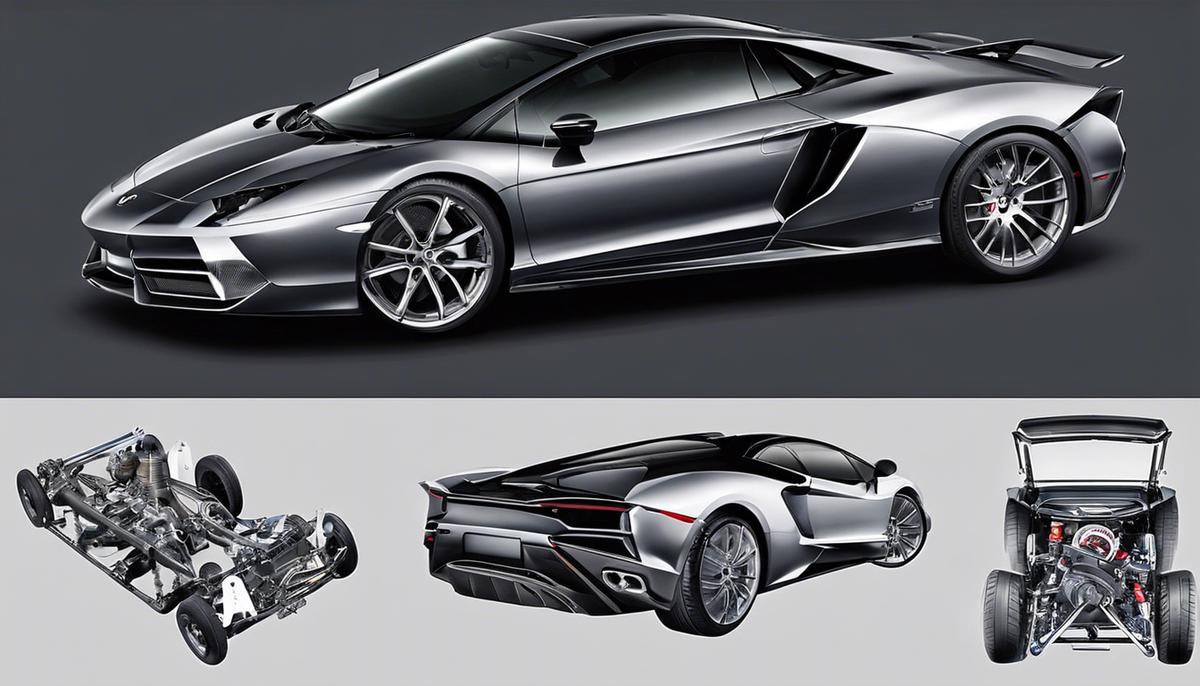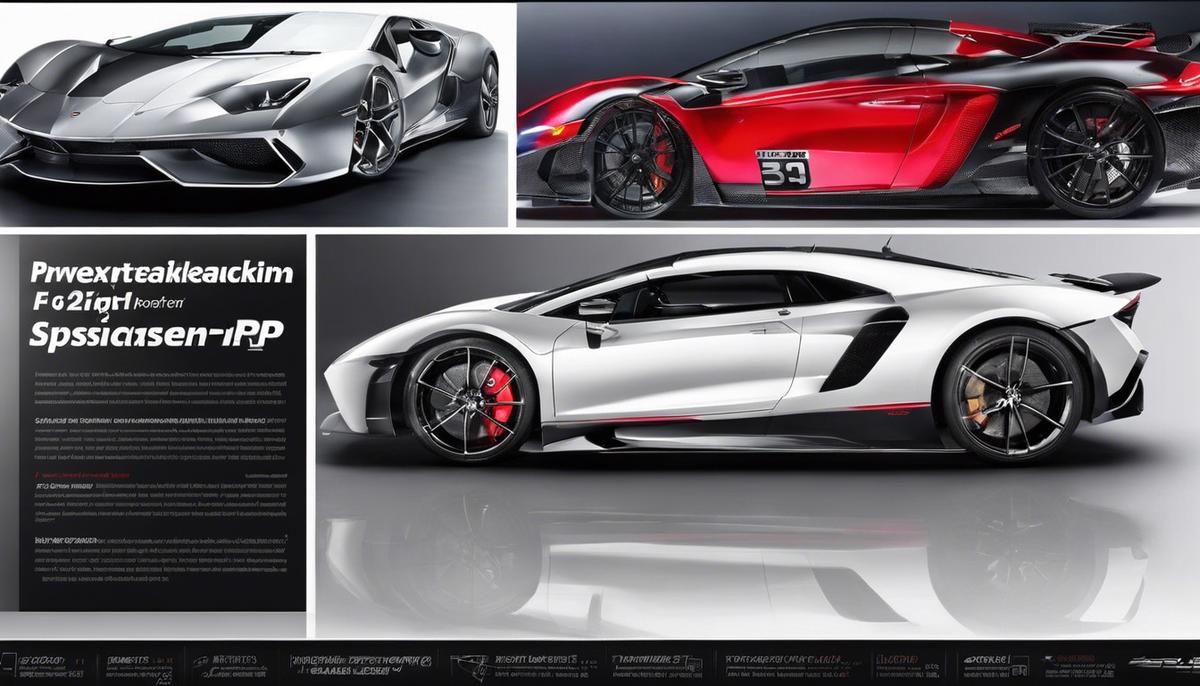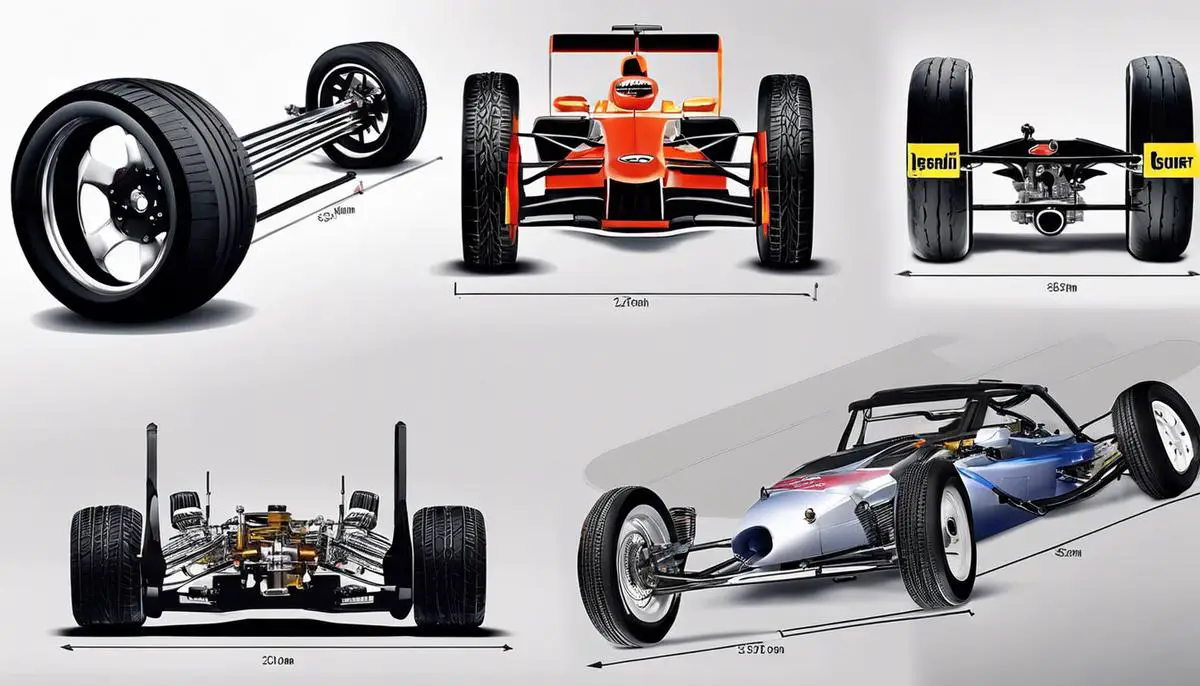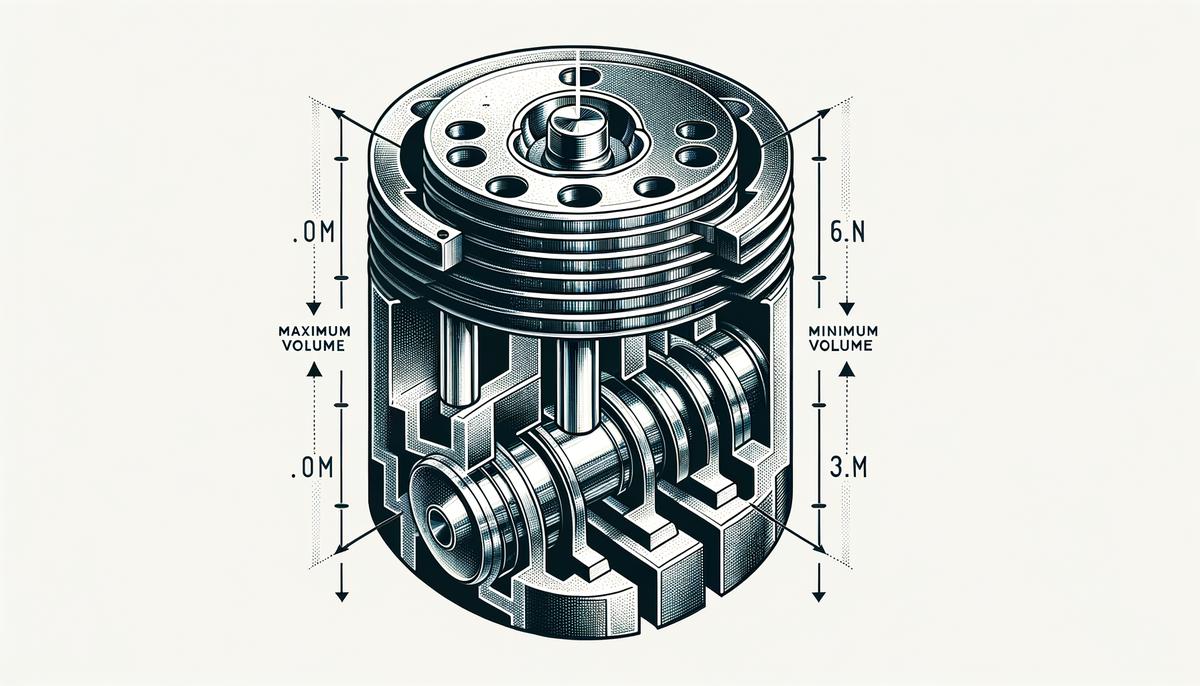When it comes to the driving experience, few components play as pivotal a role as the vehicle’s suspension system. It’s the unsung hero that determines not just the comfort of your journey, but also the control and safety with which you navigate the myriad challenges of the road. From potholes and uneven surfaces to sharp turns and sudden stops, the type of suspension your car is equipped with can markedly influence its behavior. This exploration into the intricate world of car suspensions is designed to untangle the complexities and lay bare the core differences among the various systems. Whether you’re an automotive enthusiast or simply an inquisitive driver, our journey will traverse the realms of independent, solid axle, and semi-independent suspensions, insightfully disclosing their mechanisms, widespread applications, and the reasons why certain types may be more prevalent in distinct categories of vehicles.
Contents
- 1 Types of Car Suspensions
- 2 Performance Factors of Suspension
- 2.1 Tackling the Twists and Turns: Suspension Systems Explained!
- 2.2 Suspension Basics: Keeping It Smooth!
- 2.3 Beyond the Basics: Advanced Systems Galore!
- 2.4 Adaptive Dynamic Suspensions
- 2.5 Semi-Active and Active Suspensions
- 2.6 Hydraulic Suspensions
- 2.7 Electromagnetic Suspensions
- 2.8 The Stunning Impact of Suspensions
- 2.9 Wrapping it Up: Choose Your Ride Wisely!
- 3 Suspension Durability and Maintenance
- 4 Real-World Suspension Comparisons
- 5 Choosing the Right Suspension
Types of Car Suspensions
The Ins and Outs of Car Suspension Systems: A Quick Guide
If you ever wondered what makes a car ride smooth even when the road looks like the surface of the moon, the answer is tucked away under the vehicle in its suspension system. This magical contraption has more to it than just coil springs and shock absorbers. So, buckle up as we take a dive into the world of car suspension systems!
First off, there’s the most common type of suspension found on tons of cars: the MacPherson Strut. This genius design mixes a shock absorber and a spring in one compact unit. You’ll find it in lots of front-wheel-drive cars because it’s pretty simple and doesn’t hog too much space.
Next up is the Double Wishbone setup. Picture a butterfly’s wings; that’s sort of what the components look like from above. They give cars terrific control and handling because they let the wheels move up and down nicely. Sports cars love these because they handle corners like a dream.
Don’t forget the trusty Leaf Spring system. Now, this one’s an old-timer, but you’ll still spot it in large vehicles like trucks and vans. It’s basically a stack of metal strips clamped together that flexes under weight. Simple, sturdy, and gets the job done.
Then there’s the Multi-Link suspension system. Imagine a super-flexible Spider-Man of car suspensions. It’s a complex web of arms and rods that offers awesome ride comfort and handling. Generally, it’s paraded around by higher-end cars.
Air Suspension is like the pillow-top mattress for automobiles. Instead of springs, bags of air cushion your ride. Super smooth and often adjustable; some can even lower or raise the car on command. It’s a luxe experience, but fixing them might make your wallet cry.
The Torsion Bar is the muscle man in the mix. Instead of a spring, a steel bar twists to take the hit when you roll over a speed bump. They’re simple, robust, and can be tucked out of the way, making them great for cars needing extra undercarriage space.
Coilover Suspensions are the transformers of this bunch, as they can be tweaked for height and stiffness. Found in both everyday rides and race cars, they let you customize how your car handles the road.
The Magnetic Ride Suspension is like having the sorcerer’s stone under your hood. It uses magnets and particles in the shock absorber fluid to adjust how stiff the suspension is—in real-time. Hit a nasty bump at high speed, and it tightens up instantly to help you maintain control. Neat, right?
And finally, we have the Lateral Link suspension, which is a bit like the multi-link’s cousin. It focuses on keeping the car stable and balanced while taking turns, which is key for a pleasant driving experience.
Phew! That was a whirlwind tour, but now you’ve got a solid grip on the different types of car suspensions out there. Next time you’re cruising down the road or checking out cars, you’ll know exactly what’s keeping that ride smooth!

Performance Factors of Suspension
Tackling the Twists and Turns: Suspension Systems Explained!
When it comes to car performance, suspensions are like the shoes of a high-performance athlete. You wouldn’t see a runner in flip-flops at the starting line, right? Just as athletes need the right footwear to excel, cars require the right suspension system to really hug the road and tackle those tricky turns.
Suspension Basics: Keeping It Smooth!
Suspensions have a tough job: They must keep the car’s tires in contact with the road and provide a smooth ride over bumps and dips. This affects handling, ride comfort, and the overall control of the vehicle. But not all suspensions are created equal, and they massively influence how a car behaves on the road.
Beyond the Basics: Advanced Systems Galore!
While we’ve touched on the common systems like MacPherson struts and double wishbones, there are other advanced systems that add a whole new level of complexity and customization to driving.
Adaptive Dynamic Suspensions
These use electronic monitoring to adjust how the car rides in real-time. Sensors on the car monitor how it’s moving and make lightning-quick adjustments to the suspension. They can stiffen to improve handling during aggressive driving or soften to smooth out a bumpy road. This means you get the best of both worlds – comfort when you want it and performance when you need it!
Semi-Active and Active Suspensions
Taking things up a notch, semi-active and active suspensions can actually change their behavior based not just on the road conditions, but also the driver’s style. Imagine driving a car that gets stiffer for those moments on a racetrack and then relaxes for that leisurely cruise home. It’s like having multiple cars at your fingertips!
Hydraulic Suspensions
These are the secret behind those cars that can bounce and hop – a hit in the customizable car scene. Hydraulic suspensions replace traditional springs and shocks with a system that uses pressurized fluid. They allow for a huge range of motion, meaning you can raise or lower your car with the push of a button. While not always practical for everyday driving, they’re a clear demonstration of how varied suspension systems can be.
Electromagnetic Suspensions
Some modern suspensions don’t use traditional springs at all. Instead, they use magnets and electricity to control the ride. These systems react super-fast and can adjust the suspension on the fly. They’re smart, stealthy, and represent the cutting edge of suspension technology – all to give you a ride that’s smooth as silk or as firm as you can handle.
The Stunning Impact of Suspensions
Imagine two cars taking on the same winding mountain road – one with a basic suspension and one with a state-of-the-art setup. The basic suspension might feel rough and ready, struggling to keep up with the twists and turns. The advanced system, however, reads the road, adapts in a heartbeat, and gives its driver a sense of control and precision.
For those out there who love to tinker and tweak, the world of car suspensions is like a playground. Suspension systems can be fine-tuned to an obsessive degree, making sure that every drive is tailored exactly to your liking.
Wrapping it Up: Choose Your Ride Wisely!
With so many different suspensions out there, every driver can find something that fits their style like a glove. Whether it’s the rugged reliability of a leaf spring system or the cutting-edge adaptability of an electromagnetic setup, suspensions are key in getting the performance and ride quality that one craves.
The performance impacts of different suspensions can’t be overstated – they’re the heart and soul of how a car feels on the road. And for those who relish the curves and want nothing but the best from their vehicles, getting the suspension dialed in just right is the ultimate pursuit.

Suspension Durability and Maintenance
Tackling the tough terrain or cruising the city streets, a well-built suspension system is pivotal for a vehicle’s longevity and ease of maintenance. While the world of suspensions is vast, let’s zero in on a couple of types that are renowned for their durability and friendliness when it comes to upkeep: the dependable Dependent and Independent Suspensions.
Dependent suspensions, where the wheels are connected by a solid axle or beam, offer rugged durability. The solid axle design, often seen in heavy-duty trucks and off-roading vehicles, shares the impact between the wheels. This makes it less likely for one wheel to bear the brunt of a nasty pothole or a rogue rock when off the beaten path. The simplicity of this design means fewer parts to maintain or replace, leading to easier upkeep and cost savings.
Independent suspensions, as the name suggests, allow each wheel to move independently. Types like the double wishbone offer precise handling which is a favorite for many car enthusiasts. Although it can involve more components than a dependent system, the independence each wheel has reduces the wear and tear that one wheel might inflict on the other. This means that even if they can be a bit more complex, they’ll often have less frequent issues if they’re well-maintained.
Then there are the workhorse types, like the leaf spring suspension. It’s been around since the horse-and-carriage days, and there’s a good reason for it. Mainly found in trucks and large vehicles, leaf springs are simple, robust, and don’t shy away from heavy payloads. They’re straightforward to service, given their minimal moving parts, which is a win for those who like to keep their hands clean of too much complication.
Of course, there’s no such thing as the perfect suspension system for every scenario, but these types have repeatedly proven themselves to be on the friendlier side of durability and maintenance. Whether it’s the straightforwardness of a leaf spring or the independent confidence of the double wishbone, these systems keep wheel maintenance woes to a minimum and ensure a smooth ride on a broad spectrum of byways and highways.

Real-World Suspension Comparisons
Exploring the Underpinnings: Real-World Examples of Car Suspension Types
Ever marvel at how cars can zip down bumpy roads without sending drivers and passengers bouncing off their seats? It’s all thanks to ingenious suspension systems. Some folks might not give much thought to what’s under a vehicle while it’s gliding smoothly over potholes, but for car enthusiasts, suspension systems are a core aspect of automotive technology.
Moving beyond the well-known MacPherson struts and double wishbones, let’s delve into the real-world examples where different suspension types truly shine. Take the tough and sturdy leaf springs for instance; they are the backbone of many hard-working trucks out there. The trusty Ford F-150, America’s best-selling vehicle, makes use of these for their durability and load-bearing capacity, perfect for hauling heavy payloads.
Then there’s the sleek multi-link suspension system, a staple for vehicles that take handling seriously. Car models such as the Audi A8 and Mercedes-Benz E-Class utilize this sophisticated setup, allowing each wheel to move independently, which results in a supremely balanced and smooth ride – a dream for anyone craving comfort fused with performance.
When it comes to adapting to your driving style, air suspension systems come into play. These use air springs to adjust the ride height and firmness. Vehicles like the Range Rover incorporate this kind of technology to ensure a cozy ride on city streets while being capable of tackling tough terrain with ease.
One type that’s great for fine-tuning is coilover suspensions, often found in performance and racing cars. The Subaru WRX STI, for instance, benefits from this system, allowing owners to adjust the height and dampening rate, making for an adaptable drive that can be tweaked to perfection.
For those fascinated by cutting-edge technology, magnetic ride suspension is nothing short of magic. It makes use of electromagnets and particles inside the shock absorber fluid to swiftly adjust to road conditions. Sports cars like the Chevrolet Corvette and luxury models such as the Cadillac Escalade feature this high-tech system, delivering an impressive blend of comfort and sporty dynamics.
While advanced suspensions with sensors and adjustability are impressive, the humble torsion bar remains a workhorse in the auto world. It provides a compact solution and has been used in vehicles like the Porsche 911 – synonymous with the perfect marriage of performance and everyday usability.
Lastly, lateral link suspensions, which provide stability and precision, are commonly seen in performance-oriented cars. The rear suspension of the Subaru BRZ and Toyota 86 are classic examples, ensuring these lightweight sports cars remain planted during cornering, making every twist and turn on the road an exhilarating experience.
Whether it’s the rugged simplicity of a leaf spring system or the sophisticated adjustability of a multi-link setup, the world of car suspensions is diverse and fascinating. Each type has its own realm where it excels, proving that the quest for perfect balance between durability, comfort, and handling is still very much at the core of automotive innovation. Next time a smooth ride or sharp handling is experienced, remember the marvel of engineering that’s working tirelessly underneath the vehicle.

Choosing the Right Suspension
Choosing the Best Suspension System for Your Drive
Let’s talk suspensions – they’re like the shoes of your car. You wouldn’t wear stilettos on a hiking trip, right? In the same way, selecting the right suspension system for your vehicle is critical to ensure you have the right support, comfort, and performance for how and where you like to drive.
So, with the basics out of the way, how do you go about picking the perfect setup? Step one is understanding your driving habits. Are you cruising city streets, tearing it up on backroad twists, carrying heavy loads, or taking the unbeaten path? Depending on your answer, the choice of suspension will vary.
If you’re mostly driving on smooth, paved roads and love a quiet, luxurious ride, consider a system that soaks up the bumps and keeps things comfy. Something like an air suspension might just be your ticket to cloud-like travel. It adjusts the ride height too, giving you clearance when you need it and a low profile for better handling and fuel economy.
Now, for the spirited drivers revving through winding roads in search of that thrill, a sporty setup is key. You’ll need something that gives you tighter control and keeps body roll to a minimum. A coilover suspension system is great for this. It lets you tweak the height and stiffness, so you can dial in your car’s handling to fit your style and the road’s demands.
Off-roaders and folks who like to haul heavy stuff, you need a workhorse. Durability is the name of the game here. Think about a suspension that’s robust, like a leaf spring system on trucks and SUVs. It’s old-school tough and handles heavy loads without a sweat.
For those who refuse to compromise, crave adaptability, and want their car to be smart, there’s magnetic ride suspension. It reads the road and your driving in real time, adjusting to give you the optimal blend of comfort and performance. It’s high-tech wizardry at your service, reacting to changes faster than you can blink.
But what if you do a bit of everything? A jack-of-all-trades suspension is the multi-link setup. With several arms to control wheel motion, it finds a middle ground between handling precision and ride comfort. Well rounded for various uses, it’s the choice when you just can’t decide.
Choosing the right suspension boils down to your driving needs. Think about what you do most in your vehicle – where you go, the loads you carry, and how you want to feel behind the wheel. Match your suspension to your driving lifestyle, and you’ll unlock the kind of ride that brings a smile to your face every time you hit the road. Keep in mind, no setup is set in stone. With a bit of research and maybe a tweak here and there, you can turn your car into the ultimate ride tailored just for you!

Embarking on the quest for the optimal suspension requires a confluence of technical knowledge and personal preference. The journey across various terrains and through countless miles imparts not only a deeper appreciation for the engineering marvels that lie beneath our vehicles but also an enlightened perspective to choose wisely. Your new-found understanding of car suspension systems and the consequential impacts on performance, durability, and ease of maintenance empowers you to make decisions that resonate with your driving style and demands. With this knowledge in hand, may every twist and turn in the road be a testament to the harmony between man, machine, and the path that lies ahead.



